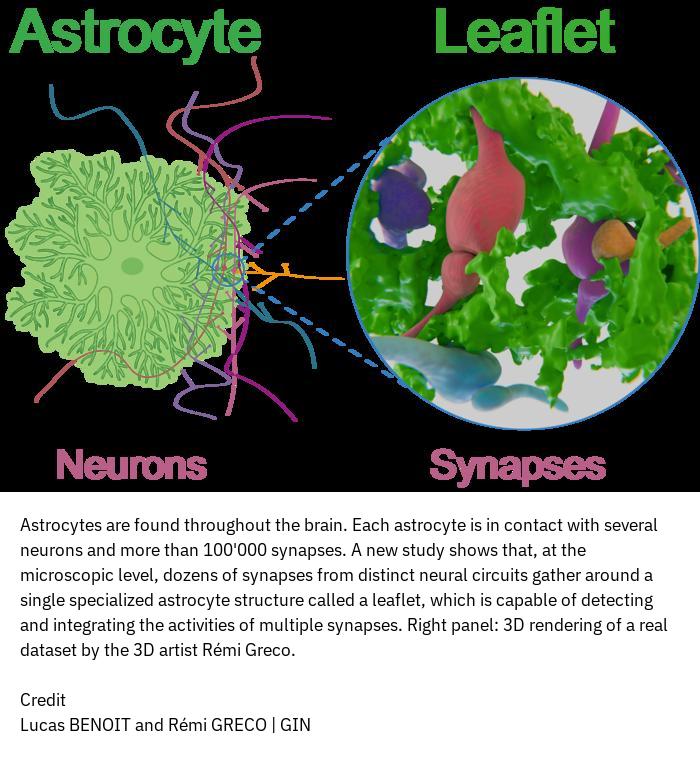Astrocytes: unexpected conductors of brain networks

A French-Swiss collaboration involving the University of Lausanne (UNIL), University of Geneva (UNIGE), Inserm, Grenoble Alpes University, and the Wyss Center Geneva has uncovered a previously unknown role for astrocytes in brain information processing.
The study, published in Cell, shows that astrocytes can integrate signals from multiple neurons at once – a major shift in how we understand brain function.
Astrocytes, star-shaped glial cells that make up nearly half the brain’s cells, were long thought to play only a supporting role in neuronal communication. This study shows instead that specialized astrocytic extensions, called leaflets, gather dozens of synapses from different circuits. Within these structures, tiny calcium signals allow astrocytes to integrate neuronal activity across multiple synapses. These signals are then amplified and can modulate communication among the enclosed synapses.
Far from being passive relays, astrocytes emerge as active computational elements of the brain.
“We have demonstrated for the first time that astrocytes are not limited to responding to a single synapse, but can integrate signals from entire neural circuits,” explains Andrea Volterra (UNIL), co-director of the study.
To reach this breakthrough, the team combined volumetric electron microscopy at nanometer resolution with a custom-developed optical microscopy method to visualize calcium signals in extremely small volumes. This revealed how leaflets, less than 250 nanometers in size, form interconnected functional domains containing the machinery to generate calcium signals directly in response to synaptic activity.
The findings suggest that astrocytes may shape higher brain functions such as memory, emotions, and decision-making, and could be involved in disorders including Alzheimer’s disease. The research opens new avenues to explore how glial cells contribute to cognition and pathology.
More information on: https://www.eurekalert.org/news-releases/1099196